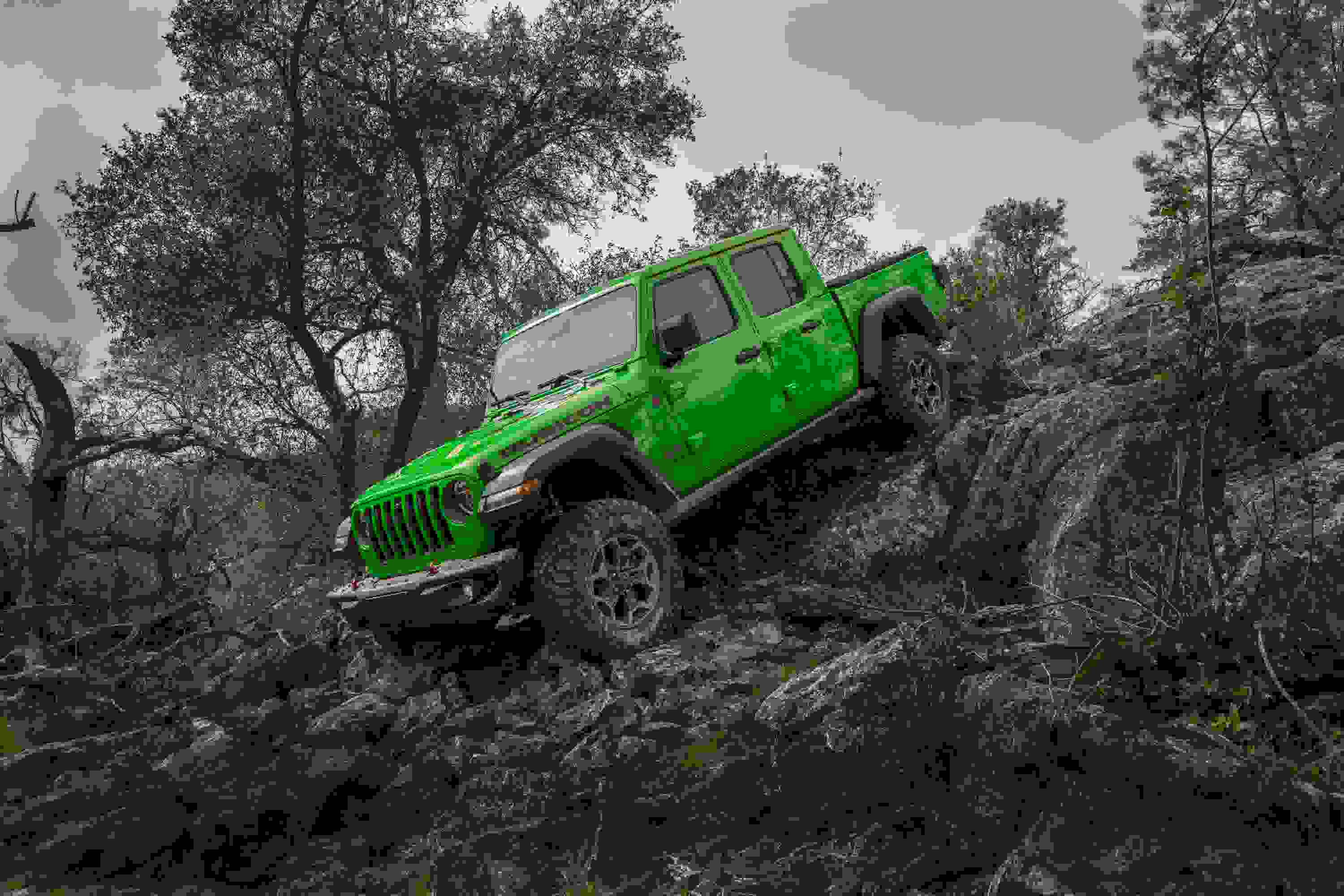All-terrain tires generally are good for casual off-roading and extensive street driving. Mud terrain tires are better for heavy off-road use in rocky, dirt-filled landscapes. Choosing the right tire is crucial to avoiding maintenance problems in the future.
So, you’ve reached the crossroads that every off-roader is bound to encounter: whether to go with mud terrain vs. all terrain tires. Figuring out which type of tire is best for your vehicle based on your needs and uses is essential if you want to save yourself a headache down the road.
Here to break everything down for you is Jerry
, the car insurance
comparison tool and trustworthy super app
. We’ll start by identifying the types of uses you’ll likely encounter in your off-roading adventures and finish with a discussion of the differences between all terrain and mud terrain tires. 
Get rewarded for safe driving. Earn points and unlock benefits. Totally free.
Start earning nowMud terrain vs all terrain tires
The differences between all terrain and mud terrain tires come down to tread pattern, sizing, and performance.
You may be wondering why this is even a decision you need to make. You may be thinking, shouldn’t all-terrain tires be good for all terrains?
You can get away with all terrain tires in many scenarios, but mud terrain tires are going to noticeably improve off-road performance—meaning if you’re a dedicated off-roader, you’ll want to at least consider mud terrain tires.
Mud terrain tires have large tread blocks and wide channels that can push rocks and other debris away from your tires, giving you much-needed traction.
On the other hand, all terrain tires have stronger tread patterns than the average all-season highway tire, but they aren’t as dramatic as mud terrain tires. All terrain tires are usually good for drivers who do a little off-roading with a focus on highway driving.
MORE: Winter tires vs. all-season tires: Which is better?
Pros and cons of mud terrain vs all terrain tires
Both tires have their limitations and advantages. Mud terrain tires are among the best options for off-roading and mud traction. They’re tough enough to tackle sharp, rocky surfaces and are very reliable. However, they are less fuel efficient, more expensive, don’t perform as well in the rain, and are known to be noisy on paved roads.
All terrain tires are great for improved traction in off-road snowy and rainy conditions. They have a longer tread life, are quieter than mud tires, and less expensive. However, these are not the tires you want to have for extreme off-road conditions and consistent off-road use.
Pros of mud terrain tires | Cons of mud terrain tires |
|---|
Ideal off-road and mud traction | |
Good for jagged, rocky surfaces | |
Reliable and safe for off-roading | |
| |
Pros of all terrain tires | Cons of all terrain tires |
Good for traction in snow and rain | Inadequate for consistent, extreme off-roading |
| |
Quieter than mud terrain tires | |
Less expensive than mud terrain tires | |
The best tires for your terrain
Use is not the only way to resolve the all terrain vs mud terrain question. You should also be looking at the terrain types you’re going to be traversing—because the type of tire you choose can make a huge difference.
Best tires for mud
This one is straightforward. Mud terrain tires are best for mud. It doesn’t matter how much power your vehicle has—if it cannot clean out mud from your tires, you will be spinning in place in no time.
Remember those large tread blocks that mud terrains have? These help dispel anything that gets lodged in your tires and push away chunks of mud, giving you optimal traction.
All-terrains just cannot replicate this performance consistently. Simply put, there is no good replacement for mud terrain tires if you’re going to be traversing mud regularly in your off-roading adventures.
Best tires for sand
Conventional wisdom tells us that having too aggressive of a tire can dig you down in sand instead of taking you forward. The ideal solution for driving in sand is to use sand paddle tires, but those aren’t very useful if you’re driving on regular surfaces, too.
Between all terrain and mud terrain tires, the tighter treads on all terrainsare better for balance and grip in the sand. There is a caveat—air pressure matters, too, which is why it is recommended you air down your tires when going on sand. While this can be achieved with mud terrains, it is better to stick with all terrain tires to avoid digging down.
Best tires for snow
Just like with sand, a specialty winter-oriented tire is better than all terrain and mud terrain tires when it comes to driving in snow, but that’s a discussion for another day.
Here, all terrain tires are also better due to their more compact nature and tighter threads. All terrains outshine mud terrains in snowy and icy conditions, as they prevent snow from packing and offer better traction on slippery surfaces.
Best tires for rocks
The aggressive treads on mud terrains are perfect for gripping dirt, chunks of mud, and rocks, providing you with better off-road traction on rocky surfaces than all terrain tires. They also have the added bonus of better stability and durability.
That being said, there are times where the consistent tread pattern of all terrain tires will be a more ideal choice, but this isn’t very often. Usually, loose dirt and rocks will be right there alongside larger rocks, so it is safe to go with the mud terrain option when you’re thinking about rocky terrain.
Best tires for desert
Desert off-roading usually involves higher speeds and requires tires with thick sidewalls to prevent the tires from degrading. All-terrain tires are a better option for this type of off-roading. The uniform design and consistent tread patterns of all terrain tires help with stability when traveling at higher speeds.
The verdict
So, what tire should you be going with? As a general rule of thumb, if you plan to off-road consistently inmuddy, extreme conditions, you should be choosing the mud terrain tires. Although pricier than all terrain tires, mud terrain tires are more reliable with large tread blocks.
If you’re more of a casual off-roader and mainly use your car for highway driving or do a lot of winter driving then all terrain tires are your best bet. These tires have a longer tread life and produce less road noise, too.
MORE: The best mud tires for your car
How to find cheap car insurance for your off-road ride
Whether you like off-roading in your Jeep Wrangler
, Ford Bronco
, or Ram 1500
, you’re going to need the right car insurance policy to financially protect your ride. But finding the best policy at the best price doesn’t have to be a headache—all you need to do is use Jerry
! A licensed broker, Jerry sifts through offerings from over 50 of the country’s top insurance providers to provide you with a customized policy at competitive prices. Jerry customers save $800 a year on average by comparing and switching on the app.
“Jerry
was easy to use, and they saved me a lot of money on my truck. I would definitely recommend them.” —Johannes T.
RECOMMENDEDInstantly compare top insurance companies
No spam or unwanted phone calls · No long forms
What insurance do you want to compare?
FAQs








